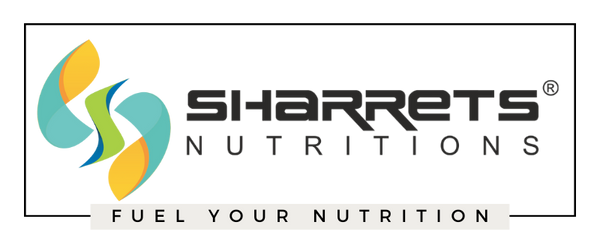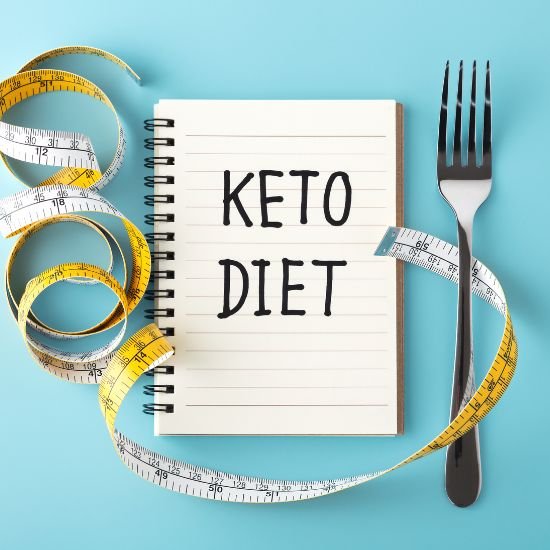
Unlock the Power of Nutritional Yeast Powder
शेयर करना
Unlock the Power of Nutritional Yeast Powder: Benefits, Recipes, and Tips for a Healthier You
In the quest for a healthier lifestyle, nutritional yeast powder emerges as a game-changer, offering a treasure trove of benefits that can elevate your meals and enhance your well-being. Packed with essential vitamins, minerals, and a rich, cheesy flavor, this versatile superfood is perfect for those seeking a nutritious boost to their diets. Whether you’re a vegan looking for a cheese substitute or simply wanting to enrich your everyday dishes, nutritional yeast has got you covered. In this article, we’ll unlock the hidden potential of nutritional yeast powder by exploring its impressive health benefits, delectable recipes that will tantalize your taste buds, and expert tips to seamlessly integrate it into your meals. Get ready to transform your kitchen adventures and experience the myriad advantages that await when you embrace this powerhouse ingredient. Join us on this flavorful journey towards a healthier, happier you!
Nutritional Profile of Nutritional Yeast
Nutritional yeast is a deactivated yeast, often a strain of Saccharomyces cerevisiae, that is rich in a variety of nutrients. This golden-yellow powder is celebrated for its high content of B-vitamins, including B12, which is crucial for vegans and vegetarians who may struggle to get enough of this essential nutrient from plant-based sources. Additionally, it is a complete protein, providing all nine essential amino acids that the body cannot produce on its own, making it a valuable addition to any diet.
Apart from its impressive vitamin and protein content, nutritional yeast is also a good source of minerals such as zinc, selenium, and magnesium, which play vital roles in immune function, DNA synthesis, and energy production. The fiber content in nutritional yeast aids in digestion and promotes a healthy gut microbiome, while antioxidants like glutathione and selenomethionine help combat oxidative stress and support overall cellular health. These nutritional attributes make nutritional yeast a powerhouse ingredient that can significantly contribute to a balanced and nutrient-dense diet.
Furthermore, nutritional yeast is low in fat and free of sugar and gluten, making it suitable for people with dietary restrictions or those looking to manage their weight. Its cheesy, nutty flavor enhances the taste of many dishes without adding excessive calories or unhealthy fats. This makes it an excellent alternative to cheese and other high-fat condiments, allowing you to enjoy flavorful meals while keeping your caloric intake in check. With its dense nutrient profile and versatile culinary applications, nutritional yeast is a valuable tool for anyone looking to boost their nutritional intake effortlessly.
Health Benefits of Nutritional Yeast Powder
The health benefits of nutritional yeast powder are manifold, starting with its role in supporting the immune system. The beta-glucans present in nutritional yeast have been shown to enhance immune function by stimulating the activity of white blood cells, which are crucial for fighting off infections and diseases. Regular consumption of nutritional yeast can, therefore, contribute to a stronger and more resilient immune response, helping you stay healthy year-round.
Another significant benefit is its impact on energy levels. The B-vitamins, particularly B12, found in nutritional yeast are essential for energy metabolism. They help convert the food you eat into usable energy, which can improve stamina and reduce feelings of fatigue. For those following a plant-based diet, nutritional yeast is especially beneficial as it provides a reliable source of B12, which is typically found in animal products. This can help prevent deficiencies that may lead to anemia and other health issues associated with low energy levels.
Nutritional yeast also supports cardiovascular health. The fiber content helps lower cholesterol levels by binding to bile acids and facilitating their excretion from the body. This process reduces the overall cholesterol levels, thus lowering the risk of heart disease. Additionally, the antioxidants in nutritional yeast protect against oxidative damage to the cells and tissues, reducing inflammation and the risk of chronic diseases. The presence of essential minerals like magnesium and potassium further supports heart health by regulating blood pressure and maintaining proper heart function.
How to Incorporate Nutritional Yeast into Your Diet
Incorporating nutritional yeast into your diet is a simple and delicious way to enhance your meals with added nutrients and flavor. One of the easiest methods is to sprinkle it over popcorn for a cheesy, savory snack that is both satisfying and nutritious. You can also mix it into mashed potatoes, pasta dishes, or scrambled eggs to elevate their taste without adding unhealthy fats or calories. Its umami flavor makes it a versatile seasoning that can enhance a wide variety of dishes.
Another great way to use nutritional yeast is as a thickening agent in sauces and soups. It can create a creamy texture and rich flavor without the need for dairy or heavy creams. For instance, you can blend it into a vegan cheese sauce made from cashews, lemon juice, and spices to create a delicious topping for nachos, pasta, or vegetables. Nutritional yeast can also be incorporated into salad dressings, providing a tangy, creamy element that pairs well with fresh greens and vegetables.
For those who enjoy baking, nutritional yeast can be added to bread and cracker recipes to impart a cheesy flavor. It can also be used in place of breadcrumbs in recipes like meatballs or veggie burgers, providing a nutrient boost and enhancing the overall taste. The versatility of nutritional yeast allows it to be used in both savory and sweet dishes, making it an invaluable ingredient in any kitchen. Experimenting with different recipes and methods of incorporation can help you discover new and exciting ways to enjoy this superfood.
Delicious Recipes Featuring Nutritional Yeast
Nutritional yeast can transform everyday recipes into gourmet delights with its rich, umami flavor. One popular recipe is vegan macaroni and cheese. To make this dish, cook your favorite pasta and prepare a creamy sauce by blending soaked cashews, nutritional yeast, garlic powder, lemon juice, and vegetable broth. Pour the sauce over the pasta, mix well, and bake until bubbly and golden. This dish is a hit among vegans and non-vegans alike, offering a healthier take on a classic comfort food.
Another delicious recipe is nutritional yeast-infused pesto. Traditional pesto is made with basil, pine nuts, garlic, Parmesan cheese, and olive oil. By substituting Parmesan with nutritional yeast, you create a dairy-free version that is equally flavorful. Blend fresh basil, nutritional yeast, garlic, nuts, and olive oil until smooth, and use it as a spread for sandwiches, a dip for vegetables, or a sauce for pasta. This versatile pesto packs a punch of flavor and nutrients, making it a staple in any health-conscious kitchen.
Nutritional yeast can also be used to create savory snacks like kale chips. Simply wash and dry kale leaves, then toss them in olive oil, nutritional yeast, and a pinch of salt. Spread them out on a baking sheet and bake at a low temperature until crispy. These chips are a crunchy, nutrient-dense alternative to traditional potato chips and are perfect for snacking or adding to salads for extra texture. With these recipes, nutritional yeast proves to be a versatile ingredient that can enhance the flavor and nutritional value of a wide range of dishes.
Nutritional Yeast vs. Other Yeast Products
Nutritional yeast is often confused with other yeast products, but it is unique in several ways. Unlike active dry yeast used in baking, nutritional yeast is deactivated, meaning it does not ferment or cause dough to rise. This makes it unsuitable for baking bread but perfect as a seasoning or supplement. Active dry yeast and brewer's yeast, another common type, are not typically used for their nutritional content but for their ability to ferment and produce alcohol or leaven bread.
Brewer's yeast, which is a byproduct of beer production, shares some nutritional similarities with nutritional yeast but has a much more bitter taste. It is also often grown on grains, which can be a concern for those with gluten sensitivities. In contrast, nutritional yeast is specifically cultivated for its nutritional properties and has a pleasant, cheesy flavor. It is also typically grown on a molasses medium, making it gluten-free and suitable for a wider audience.
While both brewer's yeast and nutritional yeast offer health benefits, nutritional yeast is generally considered the more versatile and palatable option. Its flavor profile allows it to be used in a variety of culinary applications, from savory dishes to snacks, without overpowering the taste. Additionally, the fortified versions of nutritional yeast provide a concentrated source of B-vitamins, including B12, which is not commonly found in brewer's yeast. These distinctions make nutritional yeast a superior choice for those looking to enhance their diet with a nutrient-rich, flavorful ingredient.
Common Myths About Nutritional Yeast
Despite its growing popularity, several myths about nutritional yeast persist. One common misconception is that it causes Candida infections or yeast overgrowth in the body. However, nutritional yeast is inactive and does not contribute to yeast growth in the body. In fact, it can support gut health by promoting a balanced microbiome and aiding in digestion. Another myth is that nutritional yeast contains MSG, which is untrue. While it does contain naturally occurring glutamates, these are different from the synthetic MSG and do not have the same potential side effects.
Another myth is that nutritional yeast is only for vegans or vegetarians, which limits its perceived usefulness. While it is true that nutritional yeast is a valuable source of B12 for those on plant-based diets, its benefits extend to anyone looking to boost their nutrient intake. Its rich flavor and versatility make it a great addition to various diets, including omnivorous ones. It can be used to reduce reliance on high-fat, high-sodium seasonings, thereby contributing to a healthier overall diet.
Lastly, some people believe that nutritional yeast lacks protein or is not a complete protein. This is a misconception, as nutritional yeast is indeed a complete protein, containing all nine essential amino acids. This makes it an excellent protein source, especially for those looking to diversify their protein intake beyond traditional animal products. Dispelling these myths can help more people appreciate the true value of nutritional yeast and incorporate it into their diets with confidence.
Tips for Choosing the Best Nutritional Yeast Powder
When it comes to selecting a high-quality nutritional yeast powder, making the right choice can significantly enhance your health and well-being. If you're considering Sharrets Nutritions Unfortified Nutritional Yeast Powder, here are some tips to guide your decision:
1. Know the Difference: Fortified vs. Unfortified
While many brands offer fortified nutritional yeast enriched with synthetic B-vitamins like B12, Sharrets Nutritions offers a clean, unfortified version — perfect for those who prefer whole food-based nutrients without added synthetic vitamins. If you are already getting sufficient B-vitamins from other sources, unfortified nutritional yeast is a natural and pure choice.
2. Check the Source and Purity
Sharrets Nutritions Unfortified Nutritional Yeast Powder is derived from non-GMO sources and grown on natural beet molasses — ensuring it is free from genetically modified organisms. This makes it a safe and clean option for health-conscious individuals.
3. Ensure It's Gluten-Free
If you're sensitive to gluten or have celiac disease, always look for a product that is gluten-free. Sharrets Nutritional Yeast Powder is naturally gluten-free, making it suitable for a wide range of dietary needs.
4. Prioritize Packaging & Storage
To preserve freshness and nutrients, it's crucial to choose nutritional yeast that comes in quality packaging. Sharrets provides their powder in resealable, food-safe packaging that helps maintain its potency. Always store it in a cool, dry place and check the expiration date before use.
5. Culinary Versatility
Sharrets Nutritions Nutritional Yeast Powder is finely milled, making it easy to sprinkle over popcorn, mix into soups, blend into smoothies, or use as a dairy-free cheese alternative in sauces and dressings.
Conclusion: By choosing Sharrets Nutritions Unfortified Nutritional Yeast Powder, you're opting for a premium-quality, non-GMO, gluten-free, and naturally nutritious product. Whether you're following a vegan lifestyle or just looking to add a rich umami flavor and extra protein to your meals, this is a clean and trustworthy option.
Storage and Shelf Life of Nutritional Yeast
Proper storage of nutritional yeast is essential to maintain its quality and extend its shelf life. Nutritional yeast should be stored in a cool, dry place, away from direct sunlight and moisture. An airtight container is ideal for storage, as it prevents exposure to air and humidity, which can degrade the yeast's nutritional content and flavor. If the original packaging is not resealable, transfer the yeast to a glass jar or a resealable plastic bag for optimal storage.
Refrigeration is not necessary for nutritional yeast, but it can help prolong its shelf life if you live in a particularly humid or warm climate. Storing nutritional yeast in the refrigerator can prevent it from absorbing moisture and developing a stale taste. However, always ensure the container is tightly sealed to prevent the yeast from absorbing any odors from other foods in the refrigerator.
The shelf life of nutritional yeast is generally around two years from the date of production, but this can vary depending on the brand and storage conditions. Always check the expiration date on the packaging and use your senses to determine if the product is still good. Fresh nutritional yeast should have a pleasant, cheesy aroma and a light, flaky texture. If it has a sour or off smell, or if it appears clumpy or discolored, it is best to discard it. By following proper storage practices, you can ensure your nutritional yeast remains fresh and potent for as long as possible, allowing you to enjoy its benefits to the fullest.
Conclusion: Embracing Nutritional Yeast for Better Health
Incorporating nutritional yeast into your diet is a simple yet effective way to enhance your overall health and well-being. This versatile superfood offers a wealth of nutrients, including essential vitamins, minerals, and protein, making it a valuable addition to any diet. Whether you are seeking to boost your immune system, increase your energy levels, or support cardiovascular health, nutritional yeast can provide the necessary nutrients to help you achieve your health goals.
The delicious, cheesy flavor of nutritional yeast makes it an excellent alternative to traditional cheese and other high-fat seasonings, allowing you to enjoy flavorful meals without compromising your health. From savory snacks to creamy sauces and hearty main dishes, the culinary possibilities with nutritional yeast are endless. Experimenting with different recipes and methods of incorporation can help you discover new ways to enjoy this nutrient-dense ingredient.
By dispelling common myths and understanding the unique benefits of nutritional yeast, you can confidently embrace this superfood as a regular part of your diet. Investing in high-quality nutritional yeast powder and storing it properly will ensure you reap the maximum benefits from this powerhouse ingredient. As you embark on your journey towards a healthier, happier you, let nutritional yeast be a staple in your kitchen, enhancing both the flavor and nutritional value of your meals.
















